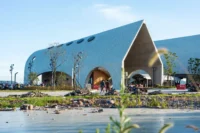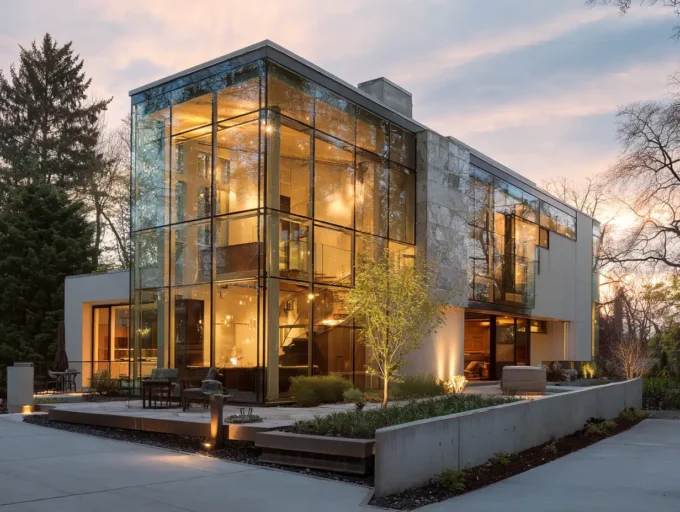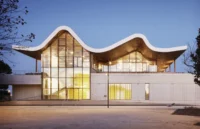Travel has always been a gateway to inspiration, shaping the way we see and create. As we explore new places, we’re exposed to diverse cultures, materials, and design philosophies that leave a lasting impression. These experiences don’t just enrich our personal lives—they transform the way architects and designers approach their craft, blending global influences into modern structures.
In today’s interconnected world, architecture reflects a melting pot of ideas. From minimalist Scandinavian aesthetics to intricate Middle Eastern patterns, travel fuels innovation by introducing us to fresh perspectives. It’s fascinating how a single trip can spark a design revolution, merging tradition with modernity to create spaces that tell unique stories.
By embracing what we learn from our journeys, we’re reimagining how buildings function and connect with their surroundings. Travel isn’t just about seeing the world—it’s about shaping it, one design at a time.

The Intersection Of Travel And Architecture
Travel redefines architectural design by introducing global perspectives. Architects encounter varied cultures, materials, and construction techniques, leading to fresh ideas and unique applications. Exposure to traditional Japanese wooden frameworks or Moorish geometric patterns, for example, influences how modern structures integrate cultural depth.
Creative exchanges happen as architects translate travel experiences into designs. Observing urban layouts, like Parisian boulevards or the canals of Venice, inspires innovative spatial planning. Modern cities now embed such elements to enhance functionality and aesthetic appeal.
Sustainable design benefits from travel-driven insights. Exploring eco-friendly practices in regions like Scandinavia, known for passive housing designs, informs energy-efficient planning elsewhere. Materials like rammed earth, used in African or South Asian buildings, gain relevance globally due to increased exposure through travel.
Iconic landmarks inspire reimagined interpretations. Structures like the Sydney Opera House or the Taj Mahal demonstrate how cultural identity shapes design, prompting architects to create spaces that blend local traditions with global appeal. This fusion leads to architecture that resonates universally.
Historical Influence Of Travel On Architectural Styles
Architectural styles throughout history showcase the profound impact of travel. Cultural interactions and exposure to distant lands have consistently shaped design approaches.
Cultural Exchange And Design Evolution
Global travel historically facilitated cultural exchanges that influenced architectural evolution. As merchants, explorers, and scholars traveled, they transported materials, techniques, and ideas. Roman architecture, for instance, absorbed elements from Greek temples, Etruscan engineering, and Egyptian obelisks. Similarly, Islamic architecture incorporated Persian domes and Byzantine mosaics, enriching its aesthetic diversity.
Cross-continental trade routes also played a significant role. The Silk Road disseminated Chinese pagoda designs and intricate Indian latticework across Asia and beyond. These cultural transmissions enhanced local techniques, integrating foreign innovations and fostering unique architectural hybrids.
Iconic Examples From The Past
Historical structures reveal how travel-inspired designs redefined architecture. Gothic cathedrals in Europe, such as Notre-Dame de Paris, combined Romanesque solidity with pointed arches inspired by Eastern forms seen during the Crusades. Venetian palazzos mirrored Byzantine and Islamic artistry due to Venice’s role as a trade hub.
In the Americas, colonial-era Spanish missions reflected Moorish architectural influence carried to Spain from the Islamic world. Meanwhile, the Taj Mahal stands as a testament to Persian and Mughal architectural fusion, made possible by the movement of artisans and design principles across empires. These icons underscore travel’s lasting imprint on architectural styles.

How Travel Shapes Modern Architectural Trends
Travel introduces architects to diverse landscapes, materials, and design approaches, influencing modern architectural trends. It fosters creativity, sustainability, and adaptability by integrating global inspiration into contemporary structures.
Inspiration From Global Landscapes
Natural and urban landscapes encountered during travel inspire architectural concepts and forms. Architects study structures like the mountains of Patagonia or the urban density of Tokyo, translating these elements into innovative designs. For instance, flowing, organic structures like Zaha Hadid’s buildings echo the fluidity of natural topographies. Urban planning examples, like the compact yet efficient arrangement of Hong Kong skyscrapers, highlight vertical space utilization, guiding urban solutions in dense cities worldwide.
Cultural landscapes also provide aesthetic cues. Moroccan riads influence courtyards in luxury modern homes, while Mediterranean seaside villages inspire cascading terraces and whitewashed finishes. Travel helps architects draw these visual and functional elements into modern design frameworks.
Incorporating Sustainable Practices From Abroad
Exposure to sustainable methods in different regions expands eco-conscious design practices. Scandinavian countries emphasize energy-efficient wooden construction and passive design, informing global architecture trends. Similarly, regions like Africa and South Asia, with rammed earth structures, demonstrate how natural insulation materials address climate-specific needs.
We find renewable energy systems, such as solar-integrated designs in German structures, impacting energy use strategies. Japan’s earthquake-resistant building techniques inspire adaptive safety measures in seismically active regions. Travel connects architects to these sustainable approaches, leading to environmentally responsible, adaptable designs suitable for diverse geographic and climatic settings.
Case Studies Of Travel-Inspired Modern Architecture
Travel continues to play a pivotal role in modern architectural innovation. Examining specific architects and buildings reveals how global inspiration shapes design excellence.
Renowned Architects And Their Travel-Inspired Works
Frank Gehry’s iconic structures often reflect his exposure to various cultural aesthetics. His design of the Guggenheim Museum in Bilbao incorporates fluid shapes, inspired by maritime elements he observed during his travels to port cities. Similarly, Le Corbusier translated lessons from global urban movements into projects like Chandigarh, India, integrating modernist principles with local needs shaped by his direct observations during his visit.
Zaha Hadid found inspiration for her organic, flowing designs through her engagement with natural topographies and dynamic urban settings worldwide. Her architecture, such as the Heydar Aliyev Center in Azerbaijan, prominently displays influences from landscapes she encountered during her international exploration.
Unique Buildings Reflecting Global Influences
The Lotus Temple in New Delhi draws design inspiration from Sydney Opera House and natural forms explored during the architect’s global studies, creating a symbol of universal spirituality. Similarly, the Burj Al Arab in Dubai borrows structural cues from sailboats, influenced by the region’s maritime heritage and the broader study of international waterfront architecture.
The Pompidou Center in Paris reflects cross-cultural exchanges between industrial techniques from the US and art-centric design philosophies from Europe. In contrast, Singapore’s Marina Bay Sands integrates cascading terraces inspired by Asian landscapes and cutting-edge innovations from global tourism hubs, blending cosmopolitan and local influences into its design.

Challenges In Integrating Travel-Inspired Designs
Incorporating travel-inspired elements into modern architecture raises several challenges. Differences in cultural expectations, functionality, and technical constraints often complicate the design process.
Balancing Functionality And Aesthetics
Effective designs combine visual appeal with usability. Travel-based inspirations often introduce ornate details, like Moroccan tilework or Gothic arches, which can be less practical for contemporary environments. Architects must adapt these to meet modern requirements, such as energy efficiency and user comfort. For example, integrating open-air courtyards inspired by Moroccan riads into high-density urban areas necessitates creative solutions to address climate control and space limitations. Balancing structural integrity and desired aesthetics, influenced by regional motifs, demands innovative materials and methods.
Navigating Cultural Sensitivities
Design inspired by foreign cultures requires respect and understanding. Misappropriation or misuse of cultural symbols can alienate communities and spark controversy. For instance, incorporating sacred imagery from Indigenous or Eastern cultures into commercial buildings risks undermining their significance. We ensure sensitivity by collaborating with local experts and engaging with communities to understand the cultural context. Designs like the National Museum of African American History and Culture exemplify how travel-influenced architecture can honor heritage while maintaining relevance. Balancing inspiration with authenticity ensures cultural identities are preserved without distortion.

The Future Of Architecture In A Globally Connected World
Modern architecture thrives in a world interconnected by technology, travel, and communication. Global connectivity accelerates the spread of design innovations, fostering an environment where architecture evolves collaboratively across borders. We see traditional geographic limitations fading as architects integrate diverse influences and technologies into their designs.
Cultural Synergy
Architects continuously draw inspiration from a global cultural palette. For example, biomimetic design, inspired by natural patterns observed worldwide, blends beautifully with local aesthetics. Spaces like the Gardens by the Bay in Singapore exemplify how architects balance futuristic design with natural and cultural elements. These advancements reflect an increasingly synergistic approach to creating structures that resonate universally.
Technological Advancement
Developments in technology reshape architectural possibilities. Virtual reality enables architects to explore remote landmarks visually without physical travel. Building Information Modeling (BIM) facilitates real-time design collaboration across continents, ensuring that ideas influenced by global cultures are accurately translated into projects. By employing robotics or 3D printing, complex structures, like Louvre Abu Dhabi’s intricate canopy, become feasible, showcasing global innovation in application.
Sustainability Standards
Global travel promotes higher standards of sustainability as architects adopt eco-friendly methods learned abroad. Passive cooling systems from desert regions influence design in warmer climates, while energy-positive housing from northern Europe guides energy-efficient construction practices. Growing concern for climate change underscores the need to harmonize building design with environmental conservation, prioritizing renewable systems, urban greenery, and sustainable infrastructure.
Urban Adaptability
Connectedness highlights the significance of adaptable urban planning. Architects incorporate lessons from hyper-dense cities like Tokyo to devise multifunctional spaces in growing metropolitan areas. Compact housing solutions and modular designs become indispensable in addressing urban challenges like population growth, space constraints, and resource management.
Global Architectural Identity
Modern architecture increasingly reflects a shared global identity while honoring local distinctions. Iconic structures such as Beijing’s National Stadium (Bird’s Nest) combine advanced engineering with culturally significant design elements, symbolizing collective progress. As architectural styles converge, respect for regional heritage remains crucial to preserving authenticity within global contexts.
Conclusion
Travel significantly shapes modern architectural design by fostering cultural exchange and inspiring innovative approaches. Architects incorporate diverse design elements, such as Japanese minimalism or Moroccan courtyard styles, into contemporary works to create unique, functional structures. They derive sustainable practices from global exposure, including passive cooling techniques from traditional Middle Eastern designs and energy-efficient wooden construction from Scandinavia.
Global landmarks like Burj Khalifa and the Sydney Opera House exemplify travel’s influence, blending local heritage with internationally inspired aesthetics. While integrating these elements, architects address challenges like preserving cultural authenticity and meeting modern functionality. Advances in technology, including 3D modeling and augmented reality, further enhance the translation of global inspirations into design.
As architectural trends evolve, we see travel’s impact reflected in new urban planning methods and sustainability efforts worldwide, underscoring its role in shaping how architecture adapts to a connected, dynamic world.
- architectural design inspiration
- Architectural Innovation
- architecture from around the world
- architecture influenced by cultures
- architecture influenced by travel
- architecture inspired by travel
- cross-cultural architecture
- cultural influences on architecture
- designing with global inspiration
- global architecture trends
- influences on architecture
- international architecture inspiration
- modern architectural design
- modern building designs
- travel and architecture
- unique building designs
- unique global structures
- worldwide architecture styles















Leave a comment